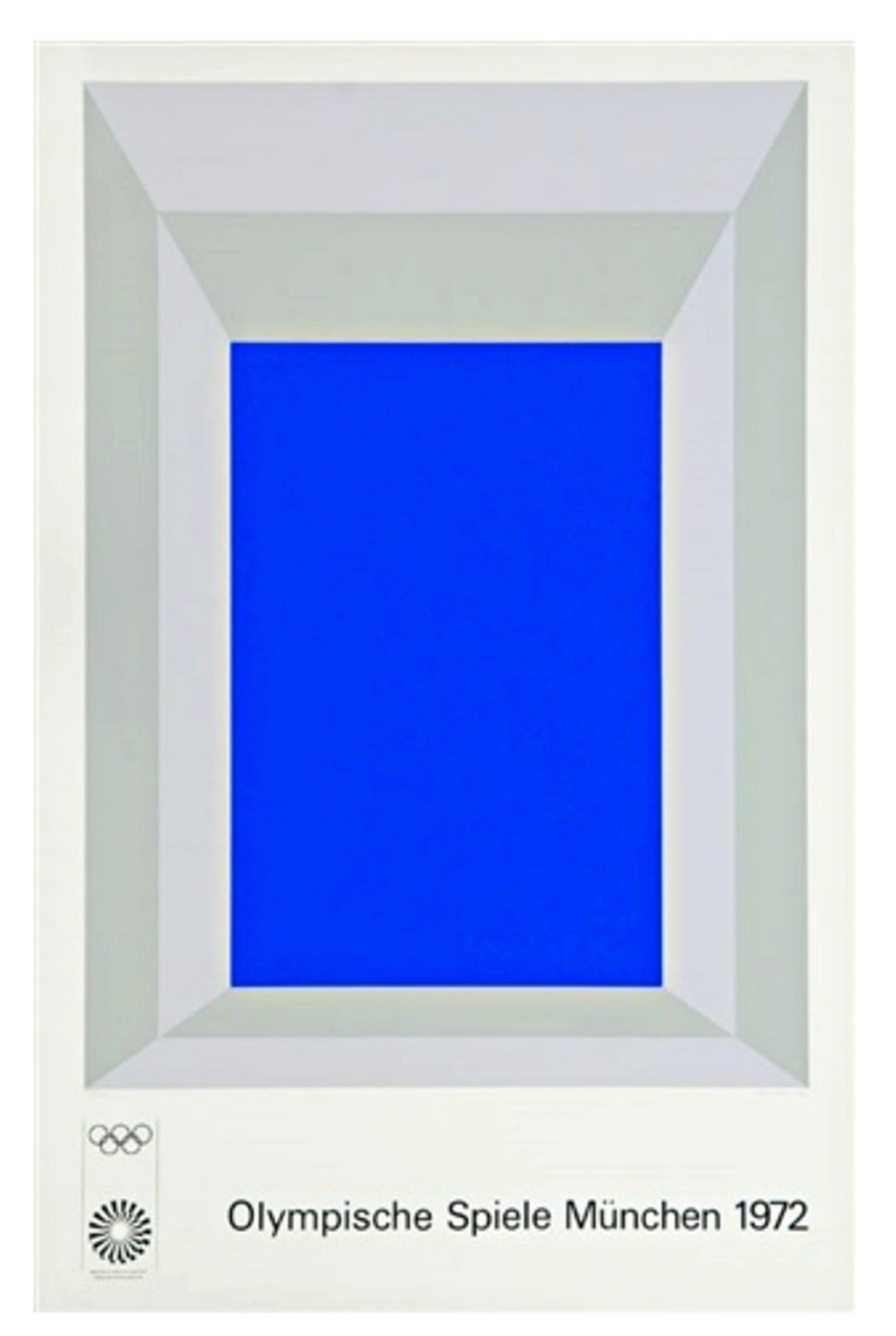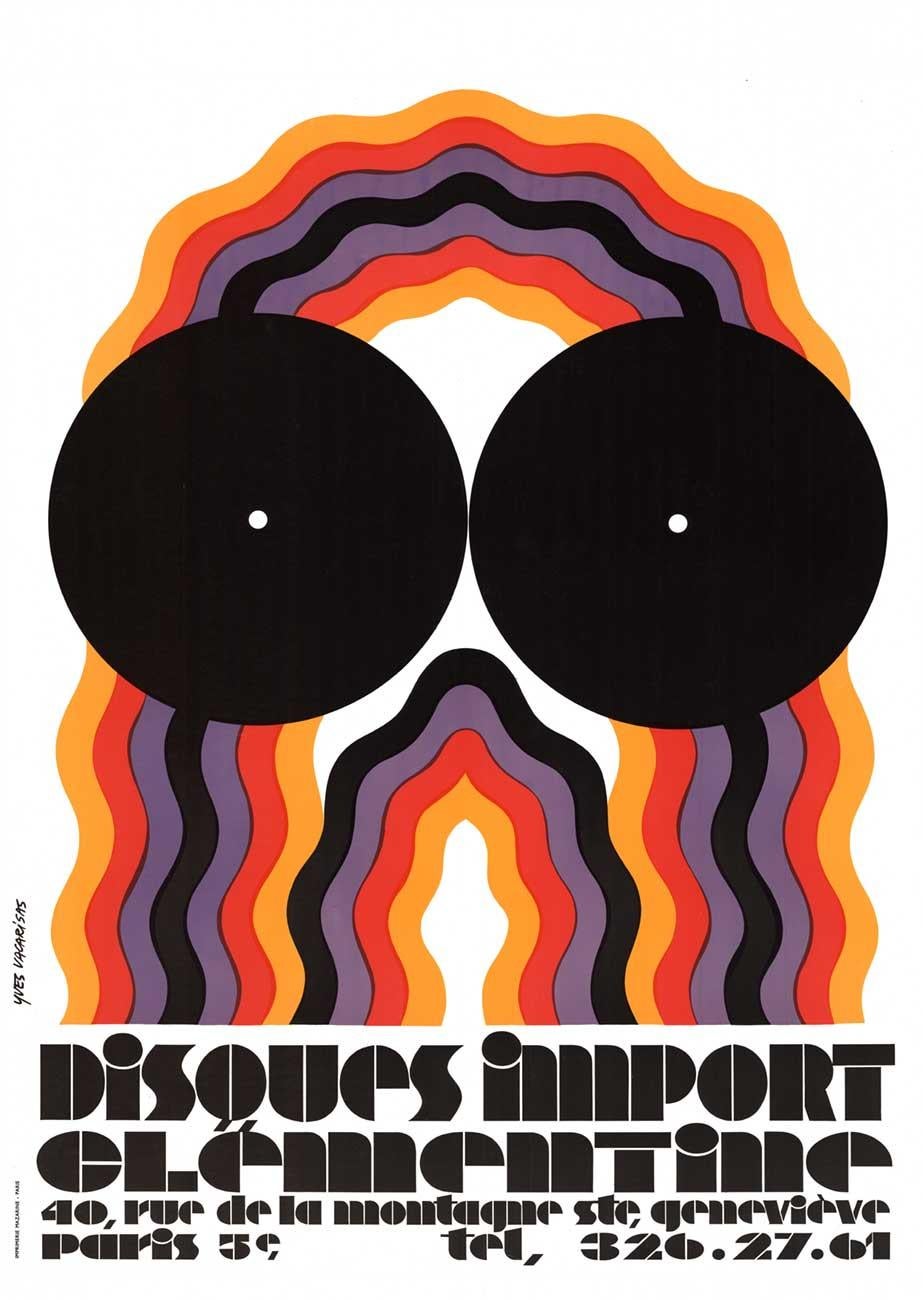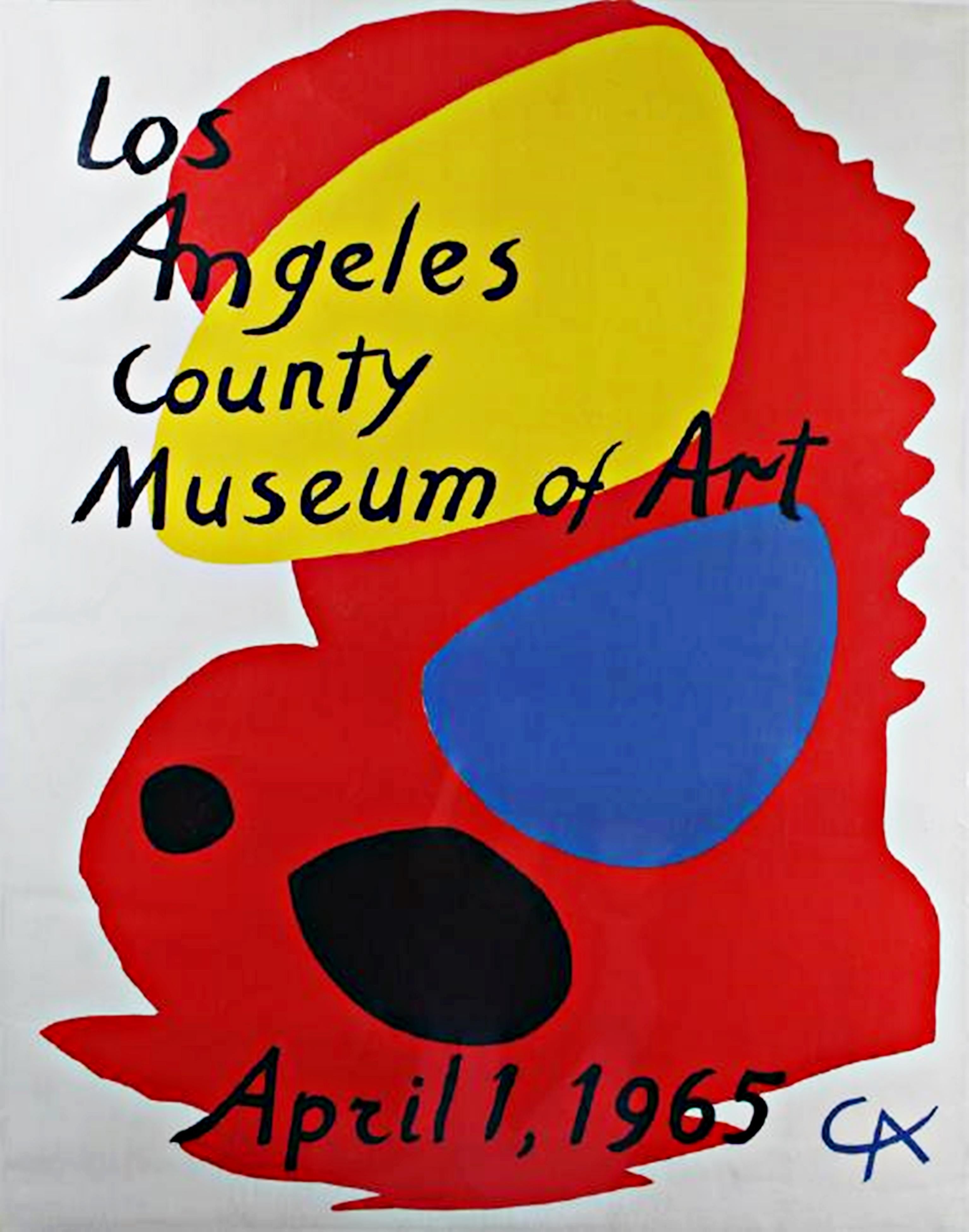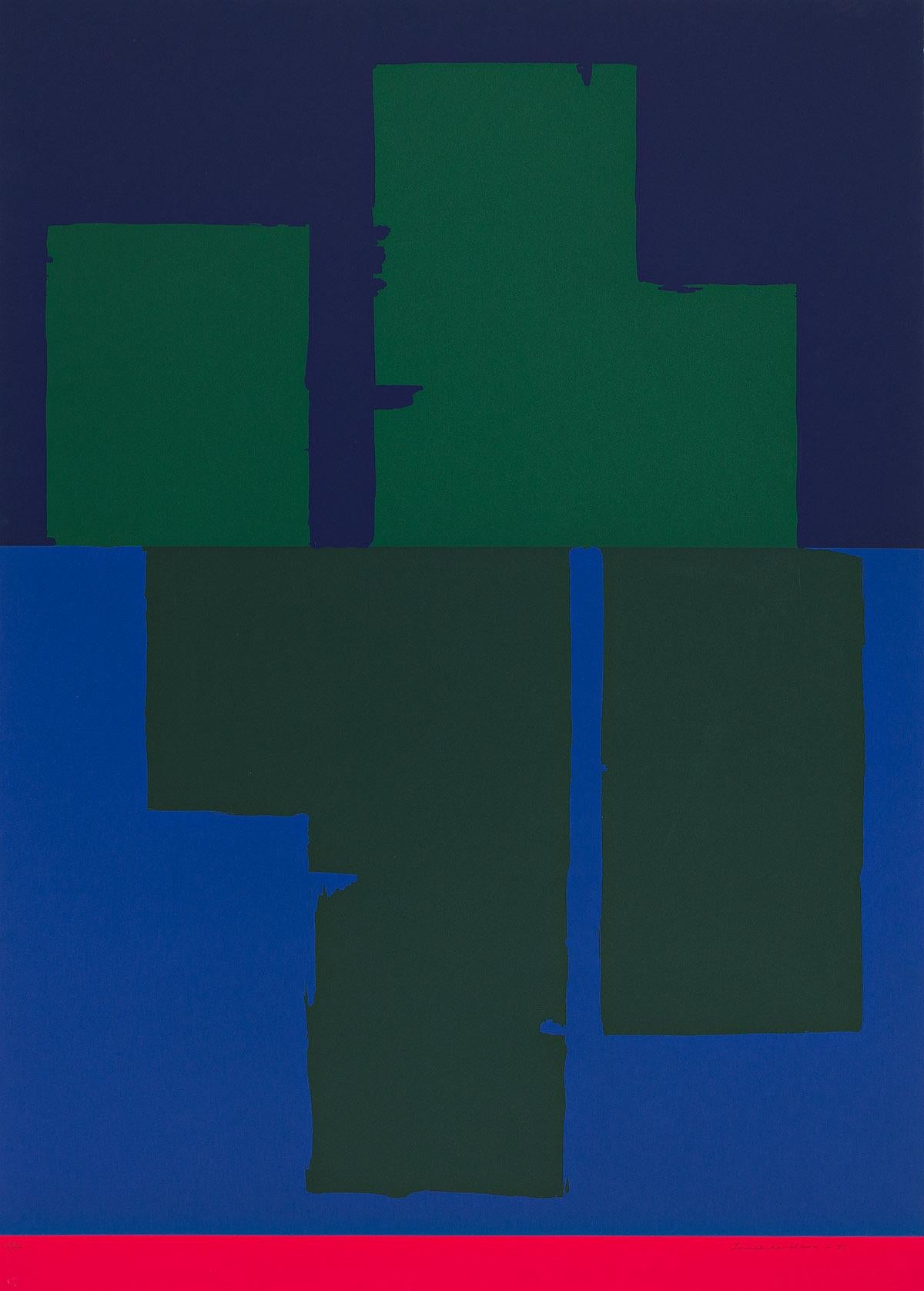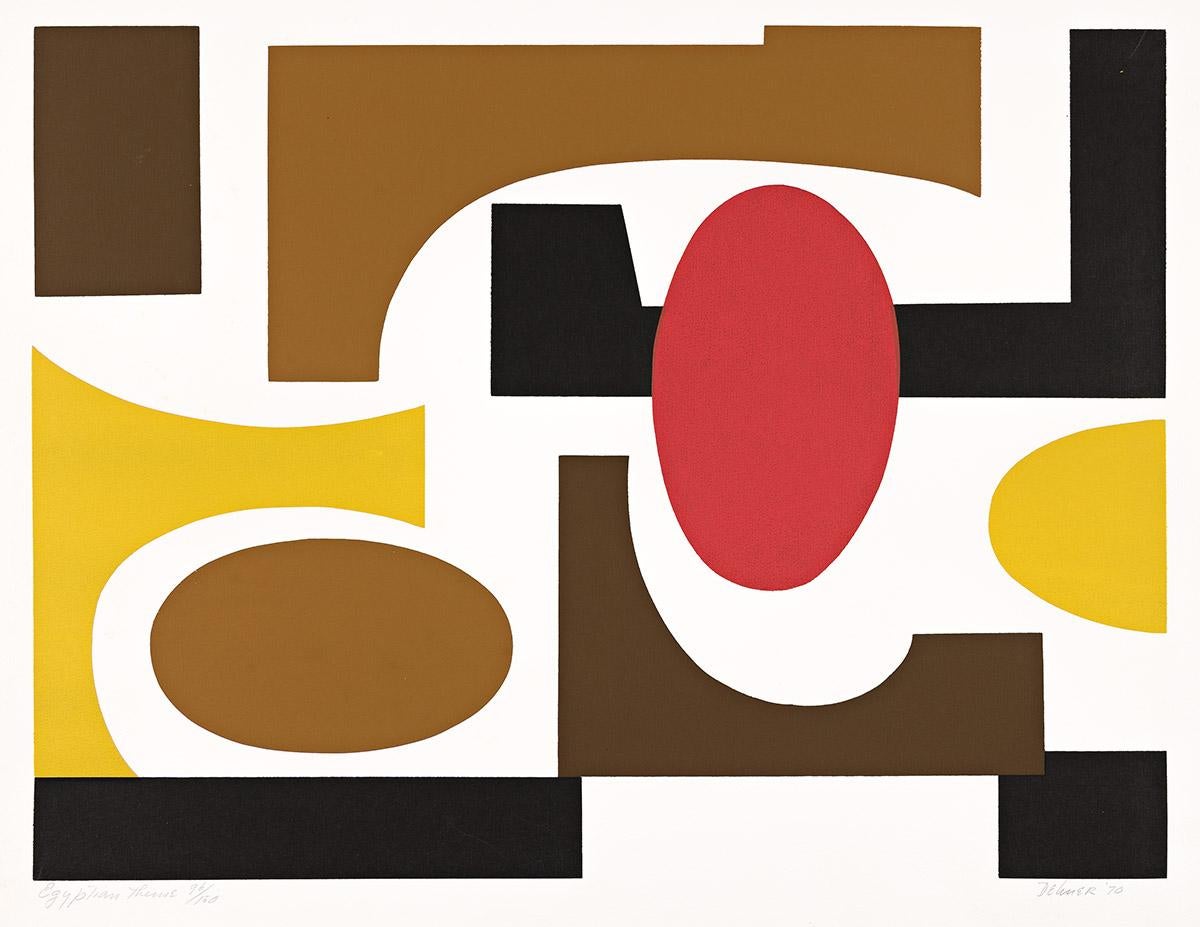Items Similar to Large Johnny Friedlaender Poster Print No Text
Want more images or videos?
Request additional images or videos from the seller
1 of 7
Johnny FriedlaenderLarge Johnny Friedlaender Poster Print No Text
About the Item
Johnny Friedlaender (26 December 1912 – 18 June 1992) was a leading 20th-century artist, whose works have been exhibited in Germany, France, Netherlands, Italy, Japan and the United States. He has been influential upon other notable artists, who were students in his Paris gallery. His preferred medium of aquatint etching is a technically difficult artistic process, of which Friedlaender has been a pioneer.
Gotthard Johnny Friedlaender was born in Pless (Pszczyna), Prussian Silesia, as the son of a pharmacist. He was graduated from the Breslau (Wrocław) high school in 1922 and then attended the Academy of Arts (Akademie der Bildenden Kunste) in Breslau, where he studied under Otto Mueller. He graduated from the Academy as a master student in 1928. In 1930 he moved to Dresden where he held exhibitions at the J. Sandel Gallery and at the Dresden Art Museum. He was in Berlin for part of 1933, and then journeyed to Paris. After two years in a Nazi concentration camp, he emigrated to Czechoslovakia, where he settled in Ostrava, where he held the first one-man show of his etchings.
In 1936 Friedlaender journeyed to Czechoslovakia, Switzerland, Austria, France and Belgium. At the Hague he held a successful exhibition of etchings and watercolours. He fled to Paris in 1937 as a political refugee of the Nazi regime with his young wife, who was an actress. In that year he held an exhibition of his etchings which included the works: L ‘Equipe and Matieres et Formes. From 1939 to 1943 he was interned in a series of concentration camps, but survived against poor odds.
After freedom in 1944 Friedlaender began a series of twelve etchings entitled Images du Malheur with Sagile as his publisher. In the same year he received a commission to illustrate four books by Freres Tharaud of the French Academy. In 1945 he performed work for several newspapers including Cavalcade and Carrefour. In the year 1947 he produced the work Reves Cosmiques and in that same year he became a member of the Salon de Mai, which position he held until 1969. In the year 1948 he began a friendship with the painter Nicolas de Staël and held his first exhibition in Copenhagen at Galerie Birch. The following year he showed for the first time in Galerie La Hune in Paris. After living in Paris for 13 years, Friedlaender became a French citizen in 1950.
Friedlaender expanded his geographic scope in 1951 and exhibited in Tokyo in a modern art show. In the same year he was a participant in the XI Trienale in Milan, Italy. By 1953 he had produced works for a one-man show at the Museum of Neuchâtel and exhibited at the Galerie Moers in Amsterdam, the II Camino Gallery in Rome, in São Paulo, Brazil and in Paris. He was a participant of the French Italian Art Conference in Turin, Italy that same year.
Friedlaender accepted an international art award in 1957, becoming the recipient of the Biennial Kakamura Prize in Tokyo. In 1959 he received a teaching post awarded by UNESCO at the Museum of Modern Art in Rio de Janeiro. By 1968 Friedlaender was travelling to Puerto Rico, New York City and Washington, D.C. to hold exhibitions. That year he also purchased a home in the Burgundy region of France. 1971 was another year of diverse international travel including shows in Bern, Milan, Paris, Krefeld and again New York. In the latter city he exhibited paintings at the Far Gallery, a venue becoming well known for its patronage of important twentieth-century artists.
From his atelier in Paris Friedlaender instructed younger artists who themselves went on to become noteworthy, among them Arthur Luiz Piza, Brigitte Coudrain, Rene Carcan, Andreas Nottebohm, and Graciela Rodo Boulanger. Like Friedlaender, these students were expert in the lithographic and etching arts. He also taught printmaker Martha Zelt.
1978 brought a retrospective of Friedlaender's works at the Musee d’Art Moderne de la Ville de Paris. He was awarded the Lovis Corinth Prize in Regensburg three years later. On his 75th birthday, Friedlaender was given a retrospective in the Bremen Art Museum. On his 80th birthday a retrospective exhibition was held in Bonn, Germany at the municipal council offices. Friedlaender died in Paris at the age of 80.
- Creator:Johnny Friedlaender (1912 - 1992, Polish)
- Dimensions:Height: 34 in (86.36 cm)Width: 24 in (60.96 cm)
- Medium:
- Movement & Style:
- Period:
- Condition:minor wear. edge wear.
- Gallery Location:Surfside, FL
- Reference Number:1stDibs: LU38213537712
About the Seller
4.9
Platinum Seller
These expertly vetted sellers are 1stDibs' most experienced sellers and are rated highest by our customers.
Established in 1995
1stDibs seller since 2014
1,546 sales on 1stDibs
Typical response time: 1 hour
- ShippingRetrieving quote...Ships From: Surfside, FL
- Return PolicyA return for this item may be initiated within 3 days of delivery.
More From This SellerView All
- Vintage Poster Bold Paris Berlin 1900-1930 Pompidou Center Polish Graphic ArtistBy Roman CieslewiczLocated in Surfside, FLRoman Cieślewicz (born 1930 13 January in Lwów Poland now Lviv Ukraine - died 1996 21 January in Paris, France) was a Polish (naturalized French) graphic artist and photographer. From 1943 to 1946 he attended the School of Artistic Industry in Lvov and from 1947 to 1949 attended the Krakow's Fine Arts Lycee. He studied at Kraków Academy of Fine Arts from 1949 to 1955. He was artistic editor of "Ty i Ja" monthly (Warsaw) 1959-1962. In 1963 he moved to France and naturalized in 1971. He worked as art director of Vogue, Elle (1965-1969) and Mafia - advertising agency (1969-1972) and was artistic creator of Opus International (1967-1969), Kitsch (1970-1971) and Cnac-archives (1971-1974). Taught at the Ecole Supérieure d'Arts Graphiques (ESAG) in Paris. In 1976 he produced his "review of panic information" - "Kamikaze"/No. 1/ published by Christian Bourgois. Folon. In 1991 he produced "Kamikaze 2" with Agnes B. He took part in numerous group exhibitions of graphic, poster and photographic art and was a member of AGI (Alliance Graphique Internationale). He designed a famous 1960s Polish Cyrk Circus Dog Poster as well as a Pop art superman cover for Opus magazine and a Charlie Chaplin poster...Category
1970s Constructivist Abstract Prints
MaterialsOffset
- Canadian Post Modern Pop Art Lithograph Vintage Poster Memphis Galerie MaeghtBy Jean-Paul RiopelleLocated in Surfside, FLVintage gallery exhibition poster. The Galerie Maeght is a gallery of modern art in Paris, France, and Barcelona, Catalonia, Spain. The gallery was founded in 1936 in Cannes. The Pa...Category
1970s Pop Art Abstract Prints
MaterialsLithograph, Offset
- Agam Silkscreen Jerusalem Lithograph Hand Signed Israeli Kinetic Op Art PrintBy Yaacov AgamLocated in Surfside, FLYaacov Agam, Israeli (b. 1928) Hand signed, not individually numbered but from edition of 180. I can include a copy of the title sheet with the edition size and his signature if you ...Category
1980s Op Art Abstract Prints
MaterialsLithograph, Screen
- Emil Schumacher Limited Edition Serigraph Terraraph Print Abstract Art InformelLocated in Surfside, FLHeavily textured abstract print in a serigraph and terragraph technique. It has a raised texture to the surface, A beautiful piece. This listing is for the one print, the cover justification sheet and the photograph are just included for provenance. This is from the limited edition of 100. Hand signed and numbered on colophon page. (They are not signed and numbered on each print) Arches paper. Dimensions: 15.75 X 15.25 These have a texture that feels like a painting. Done in Jaffa Israel based on the Hebrew Bible. Jewish, Judaica interest. Emil Schumacher is among the best-known exponents of Art Informel in Germany. His painting style, which he initially developed in the 1950s under the influence of Wols, is marked by dark, brownish black or brilliant thick red colours and a graffiti like sign language that endow the pictures the expressive character of old cracked masonry. Emil Schumacher (29 August 1912 in Hagen, Westfalen – 4 October 1999 in San José, Ibiza) was a German artist and painter. He was an important representative of abstract expressionism in post-war Germany. As an 18-year-old, Emil Schumacher undertakes a four-week-long bicycle tour to Paris, France. 1932–1935: Studies graphic design at the School of Applied Arts in Dortmund intending to become a graphic designer in advertising. 1935–1939: Independent artist without participating in exhibits. He undertakes study trips by bicycle to the Netherlands and Belgium. 1939–1945: Service obligation as draftsman in an arms factory, the Akkumulatoren–Werke of Hagen. Since 1945: Immediately after end of war, new start as independent artist. 1947: First solo exhibit in the Studio für neue Kunst. Co-founder of the artist group Junger Westen. 1954: Participates in the Willem Sandberg...Category
20th Century Abstract Expressionist Abstract Prints
MaterialsScreen
- Emil Schumacher Limited Edition Serigraph Terraraph Print Abstract Art InformelLocated in Surfside, FLHeavily textured abstract print in a serigraph and terragraph technique. It has a raised texture to the surface, A beautiful piece. This listing is for the one print, the cover justification sheet and the photograph are just included for provenance. This is from the limited edition of 100. Hand signed and numbered on colophon page. (They are not signed and numbered on each print) Arches paper. Dimensions: 15.75 X 15.25 These have a texture that feels like a painting. Done in Jaffa Israel based on the Hebrew Bible. Jewish, Judaica interest. Emil Schumacher is among the best-known exponents of Art Informel in Germany. His painting style, which he initially developed in the 1950s under the influence of Wols, is marked by dark, brownish black or brilliant thick red colours and a graffiti like sign language that endow the pictures the expressive character of old cracked masonry. Emil Schumacher (29 August 1912 in Hagen, Westfalen – 4 October 1999 in San José, Ibiza) was a German artist and painter. He was an important representative of abstract expressionism in post-war Germany. As an 18-year-old, Emil Schumacher undertakes a four-week-long bicycle tour to Paris, France. 1932–1935: Studies graphic design at the School of Applied Arts in Dortmund intending to become a graphic designer in advertising. 1935–1939: Independent artist without participating in exhibits. He undertakes study trips by bicycle to the Netherlands and Belgium. 1939–1945: Service obligation as draftsman in an arms factory, the Akkumulatoren–Werke of Hagen. Since 1945: Immediately after end of war, new start as independent artist. 1947: First solo exhibit in the Studio für neue Kunst. Co-founder of the artist group Junger Westen. 1954: Participates in the Willem Sandberg...Category
20th Century Abstract Expressionist Abstract Prints
MaterialsScreen
- Emil Schumacher Limited Edition Serigraph Terraraph Print Abstract Art InformelLocated in Surfside, FLHeavily textured abstract print in a serigraph and terragraph technique. It has a raised texture to the surface, A beautiful piece. This listing is for the one print, the cover justification sheet and the photograph are just included for provenance. This is from the limited edition of 100. Hand signed and numbered on colophon page. (They are not signed and numbered on each print) Arches paper. Dimensions: 15.75 X 15.25 These have a texture that feels like a painting. Done in Jaffa Israel based on the Hebrew Bible. Jewish, Judaica interest. Emil Schumacher is among the best-known exponents of Art Informel in Germany. His painting style, which he initially developed in the 1950s under the influence of Wols, is marked by dark, brownish black or brilliant thick red colours and a graffiti like sign language that endow the pictures the expressive character of old cracked masonry. Emil Schumacher (29 August 1912 in Hagen, Westfalen – 4 October 1999 in San José, Ibiza) was a German artist and painter. He was an important representative of abstract expressionism in post-war Germany. As an 18-year-old, Emil Schumacher undertakes a four-week-long bicycle tour to Paris, France. 1932–1935: Studies graphic design at the School of Applied Arts in Dortmund intending to become a graphic designer in advertising. 1935–1939: Independent artist without participating in exhibits. He undertakes study trips by bicycle to the Netherlands and Belgium. 1939–1945: Service obligation as draftsman in an arms factory, the Akkumulatoren–Werke of Hagen. Since 1945: Immediately after end of war, new start as independent artist. 1947: First solo exhibit in the Studio für neue Kunst. Co-founder of the artist group Junger Westen. 1954: Participates in the Willem Sandberg...Category
20th Century Abstract Expressionist Abstract Prints
MaterialsScreen
You May Also Like
- Munich 1972 Olympic Print, Danilowitz 213 Abstract Op Art hand signed & numberedBy Josef AlbersLocated in New York, NYJosef Albers Munich 1972 Olympic Games (Danilowitz 213), 1970 Color silkscreen on 250-gram Schöllers Hammer paper. Signed, dated and numbered 183/200 in graphite pencil on the front 40 × 25 1/2 × 3/10 inches Catalogue Raisonne Reference: Danilowitz, 213 Unframed Pencil signed and numbered from the limited edition of 200. By Josef Albers - famous color theorist and longtime influential head of the Yale University Art Department. This 1970 silkscreen was exhibited in the show "On Black Mountain: The Bauhaus Legacy in America", April 5, 2019-April 27, 2019 at the Sager Braudis Gallery in Columbia, Missouri. It is reproduced on page 8 of the exhibition catalogue. It features Albers signature ‘cinetic window’, and is an impressive piece of art and sports history. This is one of only 200 hand signed, dated and numbered prints - (NOT to be confused with the open poster edition of the same image on different paper, which, unlike the present work, only bears the artist's printed signature.) The present work was created in 1970 for the 1972 Munich Olympics. In anticipating of hosting the 1972 summer Olympics, Germany sought to create a positive image for itself. As Arnold Schwarzenegger would write in his memoir "Holding the Olympic Games in Munich was meant to symbolize West Germany's transformation and reemergence in to the community of nations as a modern democratic power". The Munich Olympics were billed as "the happy games" - a term that would become tragically ironic. In spite of, or rather because of, the ruthless killing of Israeli athletes by terrorists during the Munich Olympics, prints like this Albers silkscreen have become a poignant symbol of the enduring power of art to bring cultures together and promote peace. This Josef Albers Olympic...Category
1970s Abstract Abstract Prints
MaterialsScreen, Offset
- Original Disques Import Clementine vintage music posterLocated in Spokane, WAOriginal linen-backed vintage poster "DISQUES IMPORT CLEMENTINE". Excellent condition. The image with the psychedelic look of the two records that create the eyes and the rest...Category
1970s Modern Abstract Prints
MaterialsOffset
- The original limited edition 1965 Los Angeles County Museum of Art LACMA posterBy Alexander CalderLocated in New York, NYAlexander Calder The original Los Angeles County Museum of Art poster, 1965 Limited Edition vintage Offset Lithograph 32 × 24 3/4 inches 81.3 × 62.9 cm Edition of 300 This is the OR...Category
1960s Modern Abstract Prints
MaterialsLithograph, Offset
- Poster for PeaceBy Robert RauschenbergLocated in New York, NYA very good impression of this color offset lithograph with strong colors. Signed, dated and numbered 230/250 in pencil by Rauschenberg. Published by S...Category
1970s Modern Abstract Prints
MaterialsColor, Lithograph, Offset
- UntitledBy Louise NevelsonLocated in New York, NYVery good impressions of these 4 color screenprints on white wove paper. Each signed, dated and numbered 15/25, 18/36, 15/39 or 6/40 in pencil.Category
1970s Modern Abstract Prints
MaterialsColor, Screen
- Egyptian ThemeBy Dorothy DehnerLocated in New York, NYA very good impression of this color screenprint on white wove paper. Signed, titled, dated and numbered 96/150 in pencil by Dehner.Category
1970s Modern Abstract Prints
MaterialsColor, Screen
